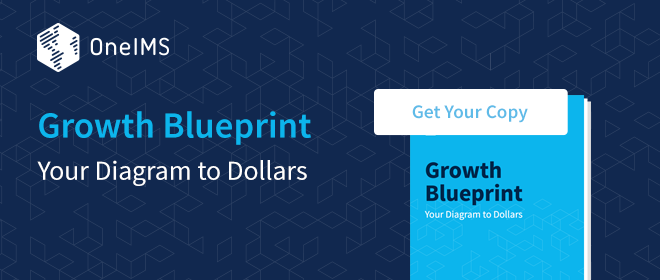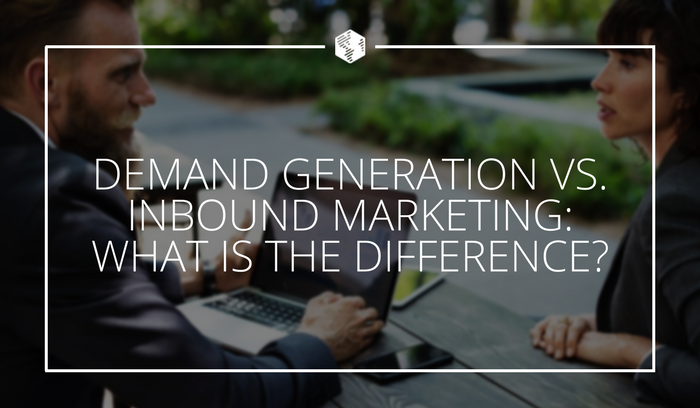Table Of Contents
There are dozens of terms you’ll run across when developing a marketing or sales strategy. While many will sound like different names for the same thing, even small differences in approach can greatly impact how effectively you attract and convert customers. If you’re not paying close attention to how these marketing terms differ from one another, you could be leaving holes in your promotion plans.
At first glance, demand generation and inbound marketing are two concepts that can seem incredibly similar. While they both focus on increasing the number of individuals interested in your brand, they actually have very different purposes. However, they can work together to improve your marketing and attract more sales.
Let’s take a look at a few of the key differences between demand generation and inbound marketing that you need to be aware of!
Key Takeaways:
- Both demand generation and inbound marketing focus on bringing new clients and customers to your brand.
- Demand generation uses traditional outbound marketing tactics to attract attention, focusing more on sales than on relationship building.
- An inbound marketing strategy is an attempt to build a solid foundation with your customers, encouraging them to make a purchase when they’re ready.

What Is Demand Generation?
Creating demand typically means trying to make target audience members more aware of your products and services. When you successfully generate demand, you increase your visibility so that members of your target audience know your company exists and understands what it provides.
For the most part, demand is generated through traditional outbound tactics, such as commercials, email blasts, sponsored posts, or print ads. Since these techniques focus on disrupting the consumer’s day-to-day activities to make them stop and take notice, they can be effective for attracting attention and building awareness. This email from Orbitz is one example of a way to increase visibility:

However, demand generation is about much more than just building brand awareness. While this is a solid first step in the process, you also need to make customers want your offerings. You need to be able to generate demand around a product or service, convincing customers to make a purchase.
Some smart ways to build strong demand around your offerings are to offer a sale or a discount, work with an influencer to leverage their audience, and even create an exclusive club or group centered around the your services. When you create a ‘need to have it’ atmosphere, customers will be eager to purchase.
How Is Inbound Marketing Different from Demand Generation?
Many marketers confuse demand generation with inbound marketing. While inbound marketing also focuses on increasing awareness about your brand’s products or services, it’s more about marketing than sales. Inbound marketing aims to create long-term relationships with customers who will purchase continuously, while demand generation is designed to increase the customer’s need for a particular product right now.
Inbound marketing also uses a different methodology than the traditional outbound tactics frequently used in demand generation. Rather than trying to disrupt the consumer’s day to get noticed, inbound marketing focuses on creating content that will fit seamlessly into the daily activities of the target audience. This means creating blog posts, videos, or other forms of content they may come across through their natural online behaviors, such as this example from HubSpot’s blog page:

The purpose of inbound marketing is to create lasting impressions on target audience members. When using this strategy, you’ll aim to educate, assist, and provide useful information to potential customers, helping them come to a decision on their own (hopefully in your favor). By guiding them towards a way to fix their problems, you’re making it more likely that the consumer will remember your brand and trust you in the future. When they’re ready to make a purchase, they’ll come to you first.
Inbound marketing revolves primarily around creating strong content that is readily available when the customer needs it. This includes videos, blog posts, infographics and other media that can provide useful information to customers during their online research. A successful inbound marketing strategy also considers how that content is made available and promotes it in multiple ways, such as through social media, forum threads, and blog comments.
How You Can Effectively Combine These Strategies
Inbound marketing and demand generation don’t actually accomplish the same things. While each strategy focuses on bringing new attention to your company, they do it in extremely different ways. However, both demand generation and inbound marketing are valuable parts of just about any promotion strategy.
On one hand, demand generation can create short-term hype about a product or service very quickly. This can be great if you want to push more sales or introduce a new offering, but it isn’t likely to make the long-lasting connections you need to create a sustainable business. Demand generation involves short-term promotions, sales, or other strategies that bring in a rush of customer attention for a short period of time.
Inbound marketing works a bit more slowly. While it is somewhat effective at attracting target audience members, it shines by increasing the trust and connection you can establish with a potential customer or client. It will take longer before you see sales from your inbound marketing strategy, but you’ll be able to lay down a solid foundation that keeps those customers coming back for more.

There are two main ways you can use inbound marketing and demand generation together. First, you can attract attention through demand generation, to makes your audience more aware of your brand. Once they know you exist and understand what you offer, you can use inbound marketing to hold their attention and convert them into long-term customers.
The second way is to establish a layer of trust with your target audience through inbound marketing tactics, then increase their need for your product through demand generation. By pushing a certain product or service with a traditional demand generation strategy, you can convince those engaged customers that it’s time to buy. Holding a sale or a promotion can encourage your audience members to purchase a bit sooner than they would have naturally.

Conclusion
Both demand generation and inbound marketing should be considered when creating your marketing strategy. Since each method increases visibility and awareness of your brand, you’ll want to pursue both if you want to attract new customers and clients successfully. However, understanding the difference between these two approaches is important to ensure you’re using them effectively.
Let’s recap what we’ve learned about inbound marketing and demand generation:
- Demand generation focuses on sales, using traditional outbound tactics to attract attention.
- Inbound marketing aims to make content available to target audience members when they’re looking for it.
- Demand generation can develop a quick buzz about your brand, while inbound marketing can create long-term trust in your company.
How do you think inbound marketing and demand generation can improve your marketing? Let us know in the comments section below!
Image credit: Pexels.





